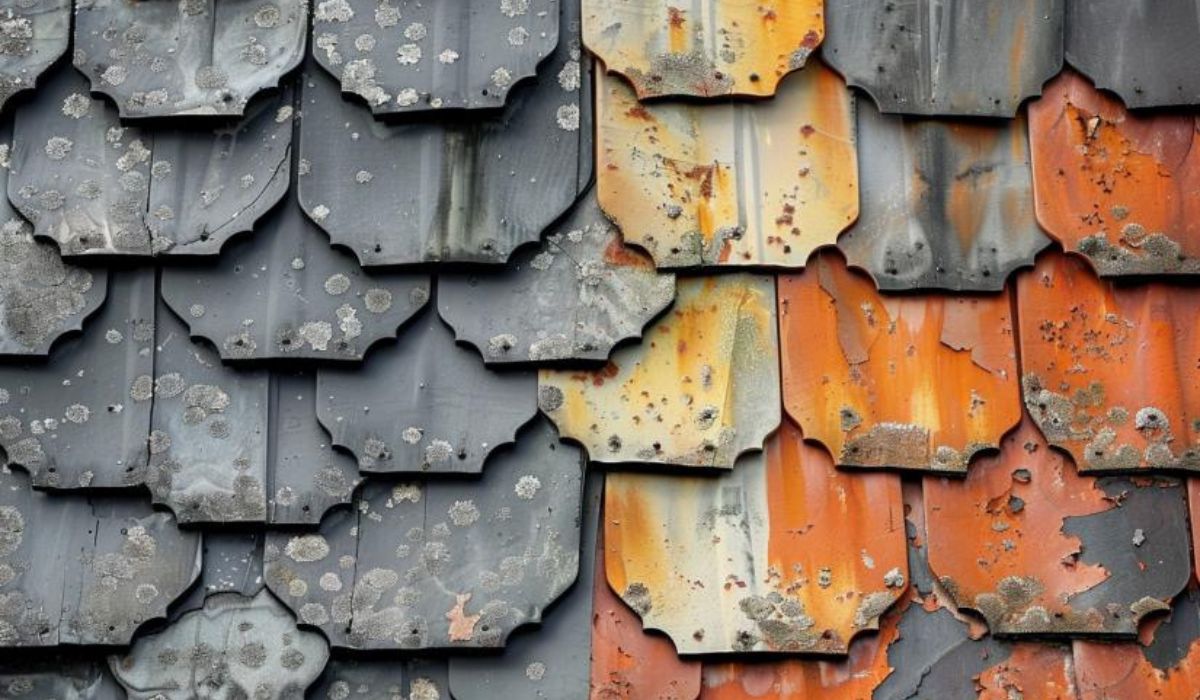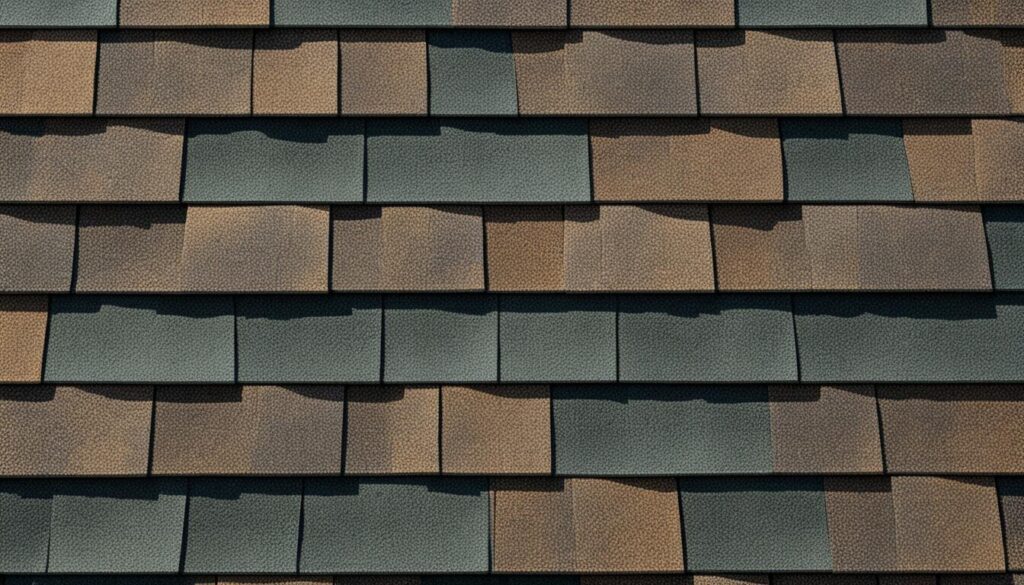
When it comes to choosing shingles for your roof, there are various options available. But have you ever wondered what sets architectural shingles apart from regular shingles? What makes homeowners opt for one over the other?
Architectural shingles and regular shingles are both popular choices for roofing, but they have distinct differences in terms of composition, durability, and overall performance. Understanding these differences can help you make an informed decision when it comes to selecting the right shingles for your home.
Key Takeaways:
- Architectural shingles are thicker and heavier than regular shingles.
- Regular shingles, also known as 3-tab shingles, are flat and uniform in appearance.
- Architectural shingles have a longer lifespan and come with longer warranties.
- Regular shingles are more affordable but have a shorter lifespan.
- Architectural shingles offer better wind resistance and a more dimensional look.
Benefits of Architectural Shingles
Architectural shingles offer several advantages over regular shingles. Their thicker and heavier composition makes them more durable and resistant to harsh weather conditions such as heat, snow, ice, rain, and strong winds. They also have a higher wind resistance rating, providing better protection in areas prone to high winds.
The dimensional look of architectural shingles adds curb appeal to a home, resembling more expensive roofing materials like cedar shakes or slate. They come in a wide range of colors, textures, and styles, allowing homeowners to choose a look that suits their aesthetic preferences.
Additionally, architectural shingles have longer warranties, providing peace of mind to homeowners. These longer warranties offer protection and coverage against potential roofing issues, saving homeowners from future expenses and maintenance.
Overall, architectural shingles offer enhanced durability, better protection, improved aesthetics, and longer warranty coverage compared to regular shingles.
Architectural shingles provide homeowners with the peace of mind of knowing that their roof is well-protected and designed to withstand the elements. With their durability, aesthetic appeal, and extended warranties, architectural shingles are an excellent choice for any homeowner looking to invest in a long-lasting and visually appealing roof.
Features of Regular Shingles
Regular shingles are also known as 3-tab shingles and offer a simpler composition compared to architectural shingles. They have a flat and uniform appearance, with a single tab shape and size. These shingles are lighter and thinner than their architectural counterparts, which makes them easier to install.
However, their lighter weight also makes them more susceptible to wind damage. While regular shingles come in various colors, they may have limited options compared to architectural shingles, which offer a wider range of colors, textures, and styles. Regular shingles are more economical in the short term, making them a suitable choice for rental properties and budget homes.

Regular shingles have a shorter lifespan, typically lasting about 7 to 10 years, compared to the longer lifespan of architectural shingles. It’s important to note that the durability of regular shingles may vary depending on the quality and maintenance. Regular shingles require regular maintenance to ensure their performance and may need replacement more frequently.
Conclusion
When considering roofing options, the choice between architectural and regular shingles depends on various factors. Architectural shingles offer superior durability, a longer lifespan, and higher wind resistance compared to regular shingles. These features make them an ideal choice for homeowners who prioritize longevity and durability, as well as those who value a dimensional look that adds curb appeal to their homes.
Regular shingles, on the other hand, are more affordable and suitable for budget-conscious homeowners or rental properties. However, they require more frequent replacement and may not withstand severe weather conditions as effectively as architectural shingles. Additionally, regular shingles come with shorter warranties and require regular maintenance to ensure their longevity.
While the initial cost of architectural shingles may be higher, their extended lifespan and warranty coverage make them a worthwhile investment in the long run. Regular shingles, although more budget-friendly, may end up costing homeowners more with frequent replacements and maintenance expenses.
Ultimately, the decision between architectural shingles and regular shingles should be based on the homeowner’s budget, aesthetic preferences, and the climate of the area. Whether it’s the architectural shingle’s durability, longer lifespan, and dimensional look or the regular shingle’s affordability and convenience, the choice should align with the homeowner’s specific needs and priorities.

Meet William Adams, a seasoned roofing expert with over 30 years of hands-on experience in the industry. Having worked tirelessly under the scorching sun and through the fiercest storms, William brings a wealth of knowledge and expertise to the table. Hailing from the heart of the USA, he’s witnessed the evolution of roofing practices firsthand, mastering every aspect along the way. Now retired from the field, William spends his days cherishing time with his loved ones while sharing his invaluable insights through this platform. With William at the helm, you can trust that every tip, advice, and recommendation provided is backed by years of real-world experience and unwavering dedication to quality craftsmanship. Join us as we journey through the world of roofing, guided by the wisdom and passion of a true industry veteran.
